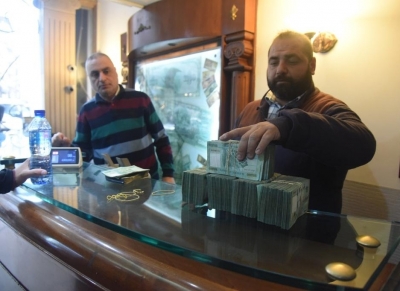Beirut: Crisis-hit Lebanon’s economic recovery is hampered by a growing dollarised cash economy, which is predicted to be $9.9 billion in 2022, or almost half the size of the country’s economy, the World Bank said in a report.
“The systemic failure of Lebanon’s banking system and the collapse of the currency” have led to a widespread dollarised cash economy estimated to account for nearly half of its GDP in 2022, according to the Spring 2023 issue of the World Bank’s Lebanon Economic Monitor (LEM), which follows the economic developments and evaluates the economic outlook and risks in the country, reports Xinhua news agency.
“The cash economy is far from a net contributor to growth. On the contrary, it threatens to compromise the effectiveness of fiscal and monetary policy, heightens the risk of money laundering, increases informality, and prompts further tax evasion,” said the report.
The report said that Lebanon’s reliance on the dollarised cash economy, which makes up 45.7 per cent of GDP in 2022, reflects “a rapid shift towards hard currency cash transactions” after a loss of confidence in the banking sector and hinders Lebanon’s progress in enhancing the financial integrity it has reached before the financial crisis by adopting anti-money laundering mechanisms.
The report noted that Lebanon’s economy is far from recovery and the country’s policy-making continues to deplete all kinds of capital, including human and social.
“As long as the economy is contracting and crisis conditions persist, living standards are set for further erosion, and poverty will continue to spiral,” Jean-Christophe Carret, World Bank Middle East Country Director, was quoted as saying in the report.
“Delays in implementing a comprehensive reform and recovery plan will only further compound human and social capital losses and render the recovery longer and more costly,” he added.
The report estimated that Lebanon’s real GDP shrank by 2.6 per cent in 2022, bringing the total economic contraction since 2018 to 39.9 per cent of GDP.
It added that the current account deficit grew to 20.6 per cent of GDP as a result of the decline in exports and rise in imports.
The report added that the local currency lost more than 98 per cent of its pre-crisis value while inflation in 2022 was 171.2 per cent, one of the highest rates globally.
–IANS


Comments are closed.